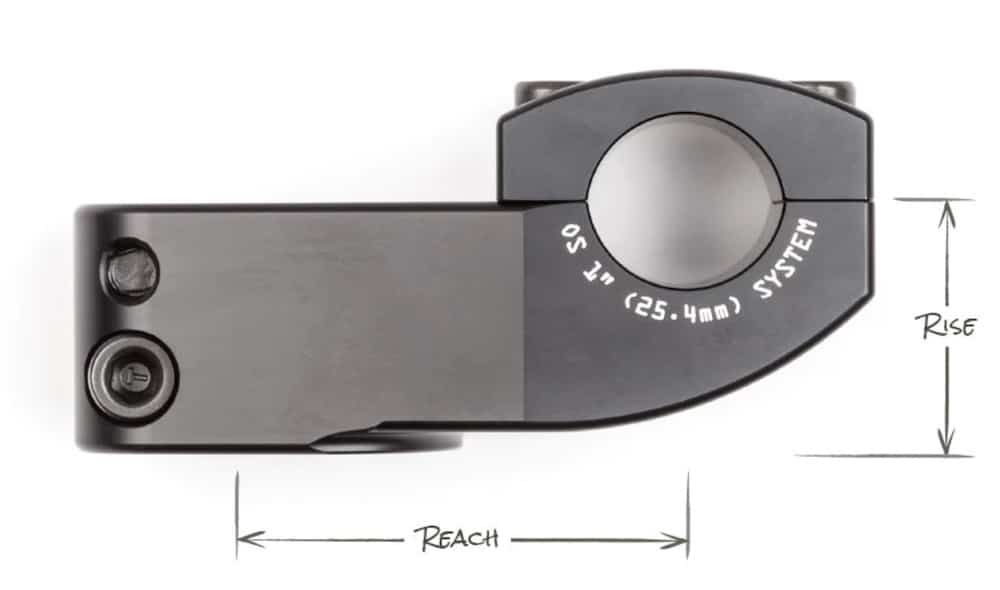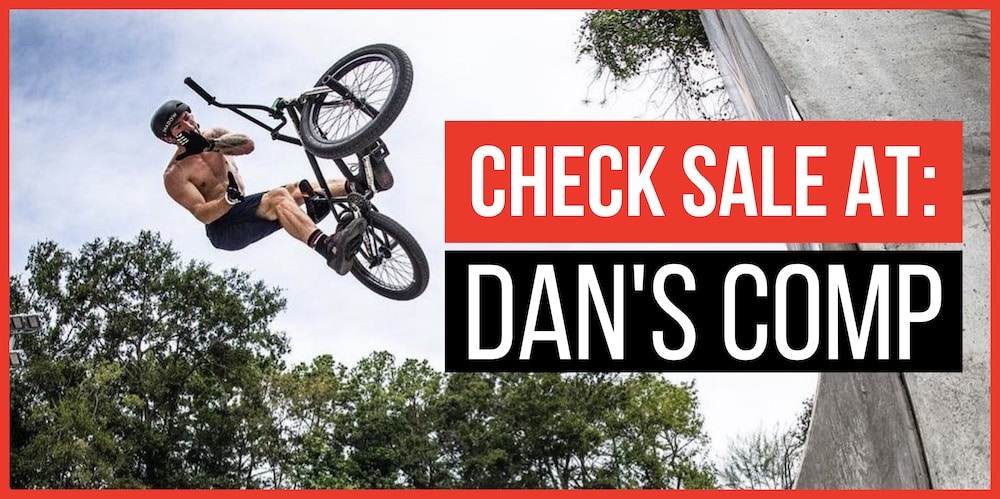Do you want to learn all the ins and outs of the BMX stem geometry?
While often overlooked, a stem plays a vital role in enhancing your ride’s performance and style.
In this article, I won’t be talking about BMX stem types (I covered that in-depth already), but the tech specs.
In other words, you’ll learn about the rise, the reach, the stack height and the clamp size.
The last two don’t really have an impact on how your bike feels, but the first two can completely change the game.
If you need stability, there’s a stem for that.
And if you need responsiveness, there’s also a stem for that.
You just need to know the right BMX stem size and pick accordingly.
This post covers:
A new (your IDEAL) stem can be a fantastic upgrade that can help you progress faster.
BMX Stem Geometry

| Stem feature | Description | Effect |
| Rise | Measured from the bottom of the stem to the center of the bar clamping area (cca. 10mm-35mm). | Higher rise = more stability & easier manuals. Lower rise = more aggressive riding position. |
| Reach | Distance from the center of the steerer tube to the center of the bar clamping area (cca. 0mm-57mm). | Short reach = more responsive for tricks. Long reach = more stability for fast riding. |
| Stack height | Thickness of the stem’s base where it clamps to the steerer tube. | No impact on ride feel; mainly affects stem fit. |
| Clamp size | Size of the clamping area, either 7/8″ (22.2mm) or 1″ (25.4mm). | Bar & stem must match clamp size to avoid compatibility issues. |
1. Rise
Let’s start with the stem rise because elevating your bike’s front-end is getting increasingly popular (I raised it significantly).
How To Measure Rise
The rise is the measurement from the bottom of the stem to the center of the bar clamping area. It goes anywhere from around 10mm to 35mm.
Note: A front load stem will have a much lower rise than a top load stem.
With a higher rise, you’ll be less hunched over and more in an upward position. This will give you a more STABLE FEEL and some additional leverage to pull your bike up more easily.
Thus, your manuals will get easier, and you’ll also bunnyhop much more effortlessly. Plus, I also found that the higher my front end gets, the simpler the nose manuals are.
BUT you need to know that transitioning to a too-high-rise stem might require a getting-used-to-it phase.
Especially if your chainstay is super short. It’s likely that you’ll loop out because you’re used to pulling harder but that extra rise doesn’t require that much effort anymore.
Instead of jumping from a 10mm rise stem to a 30mm, use spacers first. And if one of your riding buddies has a higher front-end, try and test their bike to see how it feels.
Making too drastic changes in BMX geometry can mess things up because it can completely change how your bike feels.
2. Reach
The second essential BMX stem geo spec is the reach or the length. But from my experience, fewer riders talk about the reach than the rise.
How To Measure Reach
The reach is the measurement from the center of the steerer tube to the center of the bar clamping area. The standard is 50mm (but can go from 0mm to 57mm).
It specifies how far forward or backward (closer to your body) the handlebar is.
What does this mean?
First, a short-reach stem (below 50mm) makes the bike feel a lot more responsive. It’s an excellent solution for technical street riding because it makes spins, front wheel tricks and barspins easier.
I also tested it and found out that, yes, short stems do make barspins easier.
Second, a long-reach stem (above 50mm) makes the bike feel much more stable. This is great if you are riding a lot of trails and transitions and, in general, like to go fast.
Third, a zero-reach stem is the most responsive and perfect for flatlanders. This means that the position of your bar is directly above the steerer tube.
One test you can do if you feel you need a longer/shorter stem is to move the bar slightly forward or backward and see how it feels.
Further reading: Check out some of the key benefits of a short-reach BMX stem.
3. Stack Height
You won’t see stem stack height mention too often. Why? Because it doesn’t matter.
What is stack height? It’s the thickness of the stem’s base, where it clamps around the steerer tube.
Mine (BSD Stacked stem) is 33mm thick.
Remember, the stack height has no impact on the rise.
4. Clamp Size
There was only one clamp size when I started riding, the traditional 7/8″ (22.2mm).
But lately, more and more brands have also started to offer the OS or oversized clamping, which is 1″ (25.4mm).
Your bars and your stem MUST have either 7/8″ or 1″, or they won’t be compatible.
My friend Mike recently reached out to me saying that he purchased a new stem but didn’t know why there was a gap (between the stem and the bar) when he tightened the stem bolts.
It’s because he accidentally bought an OS stem but had the bar with traditional clamping.
Conclusion: Know Your Stem Specs!
Even though neglected more often than not, understanding BMX stem geometry matters A LOT.
After being in the BMX game for over twenty years, I’d say that the rise of the stem makes the biggest change.
But reach isn’t far behind because a stem with a 45mm reach and a stem with a 50mm reach are completely different.
You should also know that you can “adjust” the rise by adding/removing spacers, but you can’t do anything about the reach.
In the end, stem specs are a personal preference, so I recommend you try something new when it’s time for a new BMX stem.
Yo! 🤘






